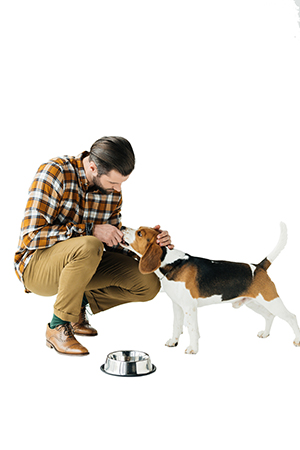 While millions of pets eat their food every day without a problem, news of pet food recalls and contamination can worry pet owners. Reports of dogs and cats becoming ill from food and treat-related salmonella outbreaks and artificial contaminants getting into pet food can leave pet owners wondering what they can do to protect their beloved animals.
While millions of pets eat their food every day without a problem, news of pet food recalls and contamination can worry pet owners. Reports of dogs and cats becoming ill from food and treat-related salmonella outbreaks and artificial contaminants getting into pet food can leave pet owners wondering what they can do to protect their beloved animals.
Fortunately, there are things you can do to minimize the risk of your pet consuming contaminated food.
Be aware of recalls
- You can find updated lists of recalled animal products on the U.S. Food and Drug Administration (FDA) website, www.fda.gov.
- Check the Humane Society’s recall lists at www.humanesociety.org. You can also sign up for their free Pet of the Week newsletter
- If you find out your pet food or treats have been recalled, immediately stop feeding them to your pet.
- Return the product to the store you bought it from for a refund, or throw it away in an area your pets cannot access.
- If you think your pet may have eaten a recalled product, contact your veterinarian—even if your pet isn’t showing symptoms.
- If your pet becomes ill or dies because of a recalled food or treat, you can report it to the FDA Consumer Complaint Coordinator in your state. You can find contact information on the FDA website.
Choose pet food carefully
While pet food manufacturing is highly regulated in the United States, it pays to seek out manufacturers with rigorous quality and safety control measures in place at every stage of the manufacturing process.
“The ingredients in your pet’s food should be subject to microbiological, sensory, chemical, and foreign matter testing as appropriate to protect your pet and give you peace of mind,” said Diane Loiselle, Vice President, Product Safety, Regulatory and Quality, Hill’s Pet Nutrition, maker of Science Diet and Ideal Balance brand pet foods.
Loiselle said it’s important to find out who actually makes the pet food. “Many people are surprised to learn that many manufacturers have their foods made by another company on the same machinery where other products are made. In the U.S., Hill’s manufactures 100 percent of its dry pet food in its own plants.”
In addition, Loiselle says that ingredient suppliers need to meet high safety standards. She said that Hill’s, for example, only buys high quality ingredients from suppliers who have reliable safety procedures in place, which Hill’s confirms with its own inspectors and testing.
If you have questions about your pet food and its manufacturing process, look for a toll- free number on the food packaging. Ask if they make their products at their own plants with their own employees. Reputable manufacturers should welcome questions and feedback about their products.
Practice safe pet food handling
Pet food can become contaminated with salmonella, especially raw foods of animal origin, such as raw beef, chicken, eggs, and raw hides or pig ear chews. Not only can salmonella make your pet sick, it can make you sick, as well. To minimize the risk of salmonella:
- Only buy products that have no visible signs of damage to the packaging.
- Don’t prepare pet foods in the same area or with the same tools used to prepare human food.
- Store pet food properly—keep it in a closed container, and refrigerate it if it is moist.
- Wash your hands in warm, soapy water after touching your pet’s feeding dishes.
- Wash and dry pet dishes and storage containers before refilling with fresh food.
Learn more about pet food safety and quality at www.HillsPet.com/PetFoodSafety.

